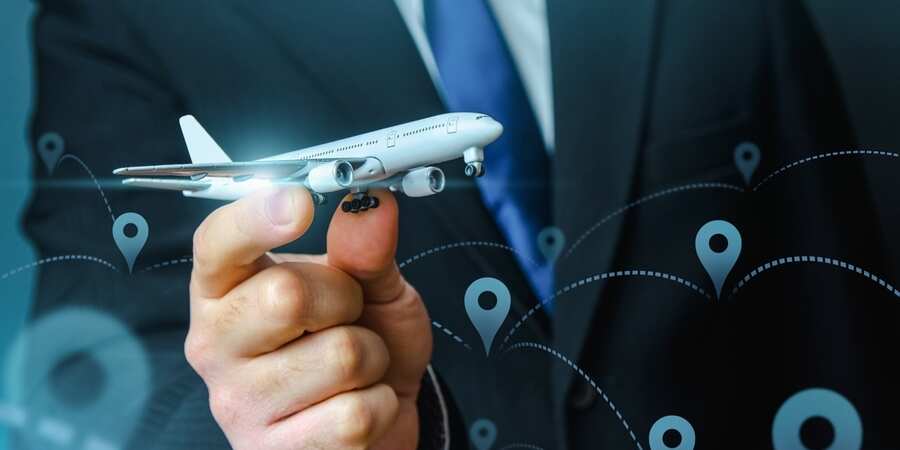Contrary to the predictions of sluggish business travel recovery in the post-COVID period, the current trends are showing encouraging signs. Last year, several reports suggested a long and rough road to travel industry recovery owing to many factors. Things appear to be changing for the better as most of the global population received COVID-19 vaccines, and companies recalled employees to offices. Most organizations are reverting to in-person interactions with clients, and executives are busy planning business trips again. Live events are slowly replacing virtual trade fairs, assuring more productive interactions. Keep on reading to learn key signs confirming a faster-than-expected post-COVID business travel recovery and how companies should plan proactively.
Factors signaling the growth of business travel
1. Rise in business travel bookings

There is a robust recovery of booking volumes that are steadily approaching the levels that prevailed before the pandemic. Continuing the current growth in booking volumes will help us reach the pre-COVID levels by the end of the coming year. Most Travel Management Companies are optimistic about the return of the pre-COVID levels of business travel. By the end of 2022, it is predicted that there will be a seventy percent recovery in all sectors, including corporate travel. Companies are cautiously adopting face-to-face meetings with customers as several countries continue to ease travel restrictions. A rise in business travel will boost the economy and further stimulate growth in business travel bookings.
2. Growth in corporate card usage
The growing adoption and use of business travel cards is an obvious sign of business travel recovery. Several organizations report a sound growth in the number of expense claims showing growth in the number of business trips. These factors suggest business activities are gaining traction once again. Most reputable card-issuing companies are witnessing a steady growth in travel expenditure in the commercial sector. It explains the rise in travel and expense spending across all business verticals. The maximum growth in travel expenditure during the post-COVID-19 period is in the SME sector. The main reason for better recovery in the small and medium business sector is a comparatively lesser requirement to comply with procedures and protocols.
3. Rise in international trips
International trips received a big hit during the pandemic period, as expected. Domestic travel did not suffer to the extent of international travel. However, international business trips are quickly reaching the level of domestic trips by business executives. International airlines are using larger aircraft carriers and increasing the frequency of trips to support the growth in the number of tourists and business travelers. The return to longer advance booking times is also a strong indicator of recovery of travel industry.
4. Trade events and business meetings
There is a rapid decline in virtual meetings and events as nearly seventy percent of business meetings and trade fairs are returning to live-only interactions. A small section of executives believes virtual meetings will continue irrespective of the easing of the travel restrictions. However, most event planners and management executives feel virtual meetings serve only as alternative arrangements.
5. Need for a collaborative approach
A collaborative approach involving Global Distribution System providers, NDC airlines, LCCs, hotels, local transport service providers, travel intermediaries, corporate travel managers, and business travelers will secure future business travel. A unified portal to bring all stakeholders of the business travel ecosystem on one platform is crucial. It will ensure a responsive and agile system offering clarity of communication and the ability to gain real-time insights. SaaS-based travel management platforms like Paxes ensure round-the-clock connectivity with travel and accommodation services besides efficient employee tracking features. Reliable alerts and always-accessible emergency services protect business travelers from risks.
Employees can use the smartphone app facility to book business travel by accessing a vast inventory of suppliers. These platforms enable the ease of integrating and changing corporate travel policies. Expense reporting and reimbursement are a breeze with such platforms. Employees can submit expense reports through the app, saving valuable time.
Must Read: Importance Of Business Travel In The Post-Pandemic Times
Conclusion
Using technology will govern the future of business travel in the post-pandemic era as the outlook to recover business travel appears brighter than ever. Organizations should be cautious while sending employees on business trips to have face-to-face meetings with clients, prospects, colleagues, and business partners.
SaaS-based platforms like Paxes improve the effectiveness of Duty of Care by allowing employees to access the app to receive real-time alerts.
Business Travel Recovery FAQs
Why did business travel take longer to recover despite the reduction in COVID-19 cases?
The sudden emergence of Omicron put brakes on the business travel recovery initially. It made several organizations tread cautiously, adopting a conservative approach to corporate travel.
What is the top priority of corporate travel managers as the business travel recovery gains traction?
Complying with the duty of care without impacting the cost-efficiency and productivity of business trips is a number one priority for travel managers.
How does employee tracking improve compliance with Duty of Care?
Real-time employee tracking enables companies to alert them in the event of emergencies. Knowing the location of an employee is vital to provide emergency help.
How did the COVID-19 pandemic benefit employees and corporate organizations?
Companies realized the need for the digitization of processes. Employees used the work-from-home opportunity for a better work-life balance. It helped companies increase productivity and reduce the cost of maintaining office facilities. There was a large reduction in commutation expenses.
What is the downside of remote working?
Work-from-home culture prevented companies from arranging events to improve company culture and boost team spirit. It impacted productivity, as employees lacked personal interactions, while line managers could not monitor and control employees effectively.



